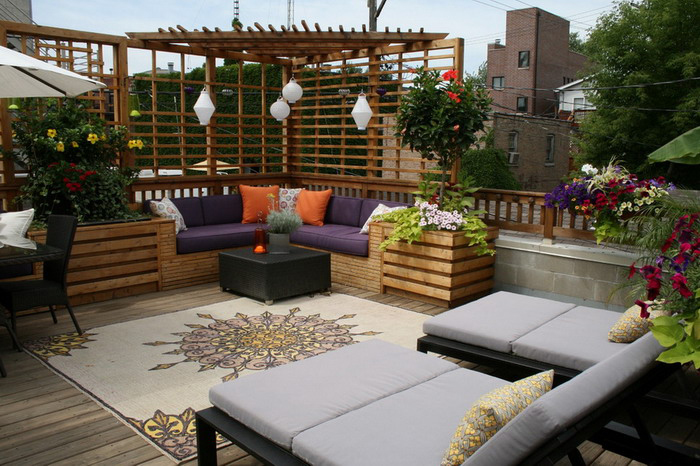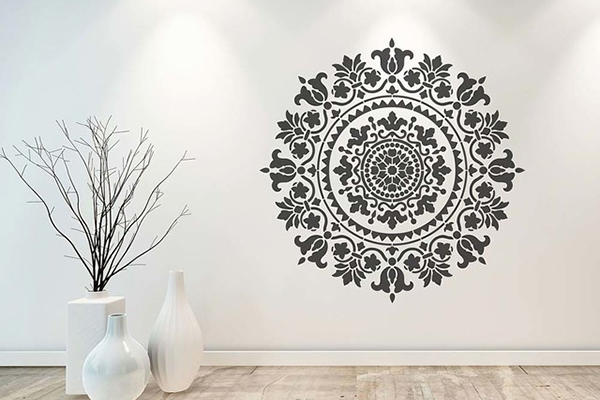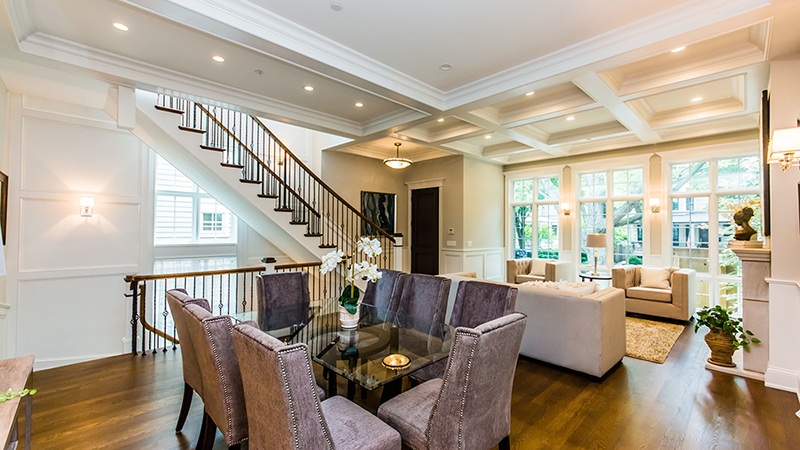Summer in Chicago means getting out to enjoy the beautiful weather. It’s probably no surprise that most homeowners in the Midwest consider the outdoor space the most important space in their home, especially after a long winter indoors. If you’re selling your home, designing your outdoor space to appeal to potential buyers is key.

[ Source: Room and Board ]
There is undeniable value in creating a relaxing, stress-free zone in our urban environment. Prepping your outdoor space with fresh staging ideas can help you sell your home faster and maybe even for a higher price. As it draws people in, it helps buyers see themselves entertaining friends and relaxing in that space. It’s an extension of the living space. If the home or condo is small, it provides an expansive feel.

[ Source: Freshome ]
Sprucing up your outdoor space can be as simple as reupholstering or buying cushions and pillows. Update old light fixtures with a fresh coat of paint. Add tea lights and candles, along with an outdoor rug to make the space cozy. Use neutral colors to draw attention to the natural green environment for a more calming feel. For privacy and to separate the space from the neighbors, add rattan blinds and hanging plants off the balcony. Strategically arrange inexpensive flowers and potted plants around the area.

[ Source: Better Homes and Garden ]
For homes with a small backyard, use accent stones to create a relaxing retreat feel. Purchase tall thin bushes for privacy. Place bamboo lanterns along pathways or string bistro lights around the dining area to create a sophisticated evening atmosphere.

[ Source:Architectural Digest ]
The style of your home should seamlessly blend into the style of your outdoor space. If you’re on a budget, Home Goods offers inexpensive outdoor accessories. For a more modern vibe, check out West Elm, Room and Board and CB2. To design a traditional space, shop at stores like Arhaus, Crate & Barrel, Restoration Hardware, Pottery Barn, Jayson Home and Walter E Smith.

[ Source: One Kind Design ]
Renting outdoor furniture for staging can be expensive, so if you work with us at Menard Johnson, we prefer to make suggestions using items that you already have. And if we do recommend purchasing something, we suggest cost-effective items within your budget that you can use in your next home.















